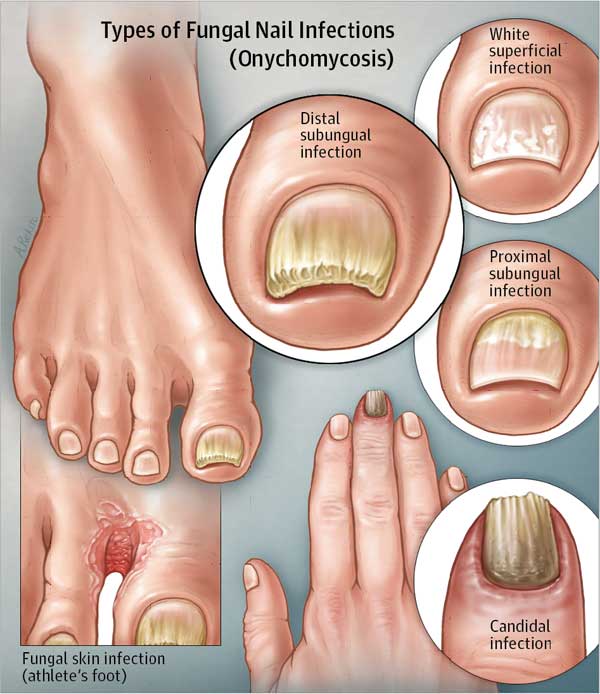Fungal Nail / Onychomycosis
Onychomycosis is a fungal infection of the nail bed and nail plate. The human nail provides a great environment for dermatophytes to flourish. It becomes a constant source of re-infection and athlete’s foot (tinea pedis). The appearance depends on the stage of the infection. It is very difficult to pinpoint the exact source of infection, but the most common is failure to maintain a good standard of foot hygiene. Hyperhydrosis, bare feet in communal showers, not drying the feet properly, and spreading of different infections all need to be considered.
Symptoms include:
Discolored, thinking and crumbly nail
Risk Factors:
- Previous trauma to the nail
- Poor hygiene
- Excessive sweating
- Warm environment , such as occlusive shoes
- Communal bathing
Problem with fungal nail:
- Not a nice site to look at
- The fungal nail may be thickened and therefore increase pressure from the footwear on the thin tissue overlying the bone.
- Pain can cause the patient to become reluctant to walking and exercising
- Possibility to spread to other family members
Treatment:
- Have to be more vigilant to personal hygiene
- Make sure you clean your towels, hosiery and shoes regularly
- Make sure you always dry your feet properly after a shower and following sporting activities.
- Loceryl for fungal nail and Lamisil for athlete’s foot (unless contraindications). Any topical antifungal agent – make sure you read the instructions carefully. You have to thin the nail using a nail file prior to application
- Don’t give up with your treatment – the fungal infection won’t disappear straight away, some treatments can take up to 6-9 months before seeing any results
- Reduced the thickness of the toe nail to decrease pressure from footwear
- Nail surgery to removed toe nail for severe cases
Ingrown Toenail / Onychocrptosis
Ingrown toenails (onychocryptosis) are caused by pressure from the growth of the nail edge into the skin of the toe, most commonly seen in the big toe. Initially presenting with minor discomfort it may continue to progress and result in an infection and become a reoccurring problem.
Risk Factors:
- Inappropriate nail cutting
- Poor footwear – narrow toe box
- Poor biomechanics
- Repetitive pressure or trauma (kicking)
- Abnormal toe nail shape
- Hereditary condition, eg involuted nail
Treatment:
- Salt water bath for 3-5 minutes
- Removal of penetrating nail spicule (the podiatrist at toe-tal will be able to remove nail spike)
- Footwear advise – avoid the pressure from footwear (talk to the podiatrist at toe-tal about what footwear suits your foot best)
- Correct cutting technique of toenails
- Antibiotic treatment may be required if toenail is infected
- Nail surgery to remove partial/total nail permanently (talk to the podiatrist at toe-tal for more information)
What to do:
- Cut nails straight across and file edges – DO NOT cut down the sides
- Seek medical help from a Podiatrist ASAP if pain persists
- Avoid tight and narrow fitting footwear
Contact Us.
Please contact the appropriate location for bookings.
Salisbury Medical Centre
PH: 3277 1621 - Fax: 3277 2887
ACE Sports Medicine – Hibiscus Sports Complex
PH: 3349 5733 - Fax: 3349 5122
Acacia Ridge Day And Night Chemmart Pharmacy
PH: 3277 4220 - Fax: 3255 5644
Brisbane Medical Specialists – Tarragindi
PH: 3184 0400 - Fax: 3892 7094
Morningside General Practice Clinics – Morningside Plaza
PH: 3399 4685 - Fax: 3395 7377
Any other enquiries please email info@toetalpodiatry.com.au or call 0422 389 652
